From a galaxy far, far away in Skeleton Crew to Bong Joon-ho’s sci-fi world: Chris McLaughlin returns to reveal the VFX magic crafted by DNEG on Mickey 17.
In 2021, Robyn Luckham walked us through DNEG’s work on Dune: Part One. He then continued his journey with Dune: Part Two, and he’s now back to share insights on another sci-fi epic: Mickey 17.
How did you and DNEG get involved on this show?
Chris McLaughlin (CM): Dan Glass was initially approached by director Bong Joon Ho – they had worked together previously, back when Dan was at Method Studios. I’d heard there was a new project from Director Bong in the works and, once I found out DNEG were in the running to work on it, I lobbied pretty hard to be involved. Fortunately, I had worked with Dan before on Deadpool 2, so he was happy to have me come on as DNEG VFX Supervisor.
To kick off creature development, Dan proposed some early animation tests. We assembled a small team in Vancouver to begin the process. Robyn Luckham joined as Animation Director and the two of us flew to London to meet with Bong, where we were briefed on the creature concepts and overall vision.
Robyn Luckham (RL): After connecting with Dan, the initial meeting with Director Bong was great. He has a history of working with creatures in his films, and had a clear vision of what the Creepers should look like. He also had a base ‘bible’ of the background and characteristics of the Creepers – they like to munch rocks! He set up a call with myself and Hee Chul Jang, his lead designer who has worked on most of his movies, where we discussed influences for Creeper design and possibly acting. Even though we hadn’t spoken a word to each other before that call, it was remarkable how similar mine and his reference points were. I knew we were going to have a great show after those two meetings and create something fun.
CM: From there, the team continued to grow. Eve Levasseur-Marineau came on board as DNEG’s DFX Supervisor, bringing a lot of experience in creature development. Lucas Cuenca joined as Character Supervisor, leading the build of our creature assets, and Steven Bills took charge of the complex rigging. We began building prototype models and rigs for the ‘Junior Creepers’ and ran early tests on their movement – run cycles, character performances, crowd behaviors, and so on. We reviewed the work regularly with Dan, but the testing process was largely driven by this team and they all continued on the show until final delivery.
Around the same time, DNEG’s previs team got involved as well, led by Alex Cannon and Pablo Plaisted. Working closely with both Dan and Bong, they previs-ed most of the major scenes in the third act. That previs work became the foundation for much of our final VFX work.
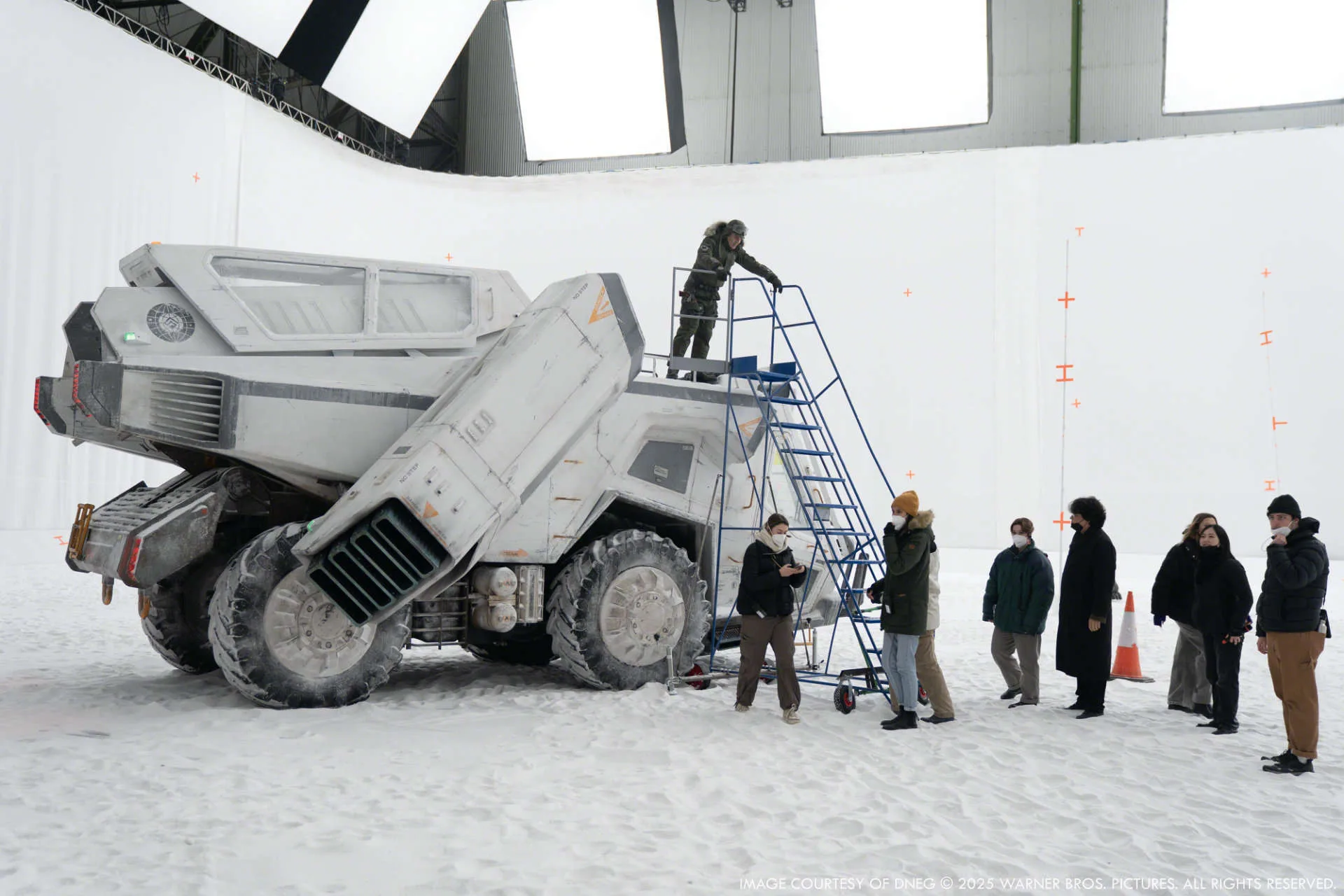
How was the collaboration with VFX Supervisor Dan Glass?
CM: Could not have been better! Dan made sure we were involved as early as possible in the process. He invited us to set, gave us a lot of creative freedom, and placed a great deal of trust in our team. As well as regular online reviews, he made regular visits to our Vancouver office to review work in person, which was invaluable. Dan was happy to let us take the lead and run with the show, but he was also quick to step in if he felt things were stalling or drifting in the wrong direction. That balance of allowing us autonomy while also providing guidance made for a really productive and collaborative relationship.

RL: Dan was really great, he was very supportive in the development of the creatures between myself and Director Bong. It is such a critical relationship to respect so we can get the acting performances that the director wants, and Dan couldn’t have been more respectful of it. He encouraged the meetings with Hee Chul and gave me great access to Bong and the other performance puppetry artists from Stitches and Glue onset. He allowed me to work across studios to Framestore as well, so we were all aligned correctly.
What are the sequences made by DNEG?
CM: We worked on a few of the spaceship launch shots early on in the film, but the bulk of our work came in the third act. That included nearly all of the sequences set outside on the snowfields of the planet Niflheim. We also created all the screen content seen in Marshall’s Situation Room.

The Creepers are both eerie and emotionally engaging creatures. Can you walk us through the initial design process and how their look evolved throughout production?
CM: A lot of the initial design groundwork had already been done by Bong’s creature designer Hee Chul Jang, who delivered some beautiful concept art. That gave us a strong foundation to build on but, to make the Creepers truly believable on screen, we needed to push the detail even further – down to the level of pore detail, veins in their eyes, and even dirt and cracks in their nails.
Dan also pushed us to think about how the environment of Niflheim would have shaped their physical development. For example, their underside would have to be tougher and more weathered since it’s constantly in contact with snow and ice, and we made sure to include subtle environmental cues like snow and frost collecting on the upper surfaces of their outer shells and in their fur.
Since we were creating crowd shots of the ‘Junior Creepers’, we had to develop a variety of texture, fur, and snow variants. They couldn’t all look identical, but at the same time, they needed to feel like part of the same species. Striking that balance was key.
Mama was a similar challenge. Framestore had built the ‘Mama Creeper’ asset, which we had ingested into our pipeline, but we had some extreme close-ups of her eyes and intimate shots of her holding the baby in her mandibles. Those areas had to hold up to close inspection, so we added in an ultra-fine level of detail there as well.
It was a fantastic creature design challenge, and Eve Levasseur-Marineau and Lucas Cuenca brought a huge amount of their expertise to the table. Their deep knowledge of creature development really elevated the final result.
RL: On the back of the initial collaborations with Hee Chul and Director Bong, myself and the animation / performance team went into a six month period of development for the acting. From the initial designs you would anticipate a more centipede/cockroach motion, however the Creepers had to move at great speed, and with legs of that size we needed to create a kind of gallop, rather than a scurry. We pulled influence from a very beloved character, the Catbus from Studio Ghiblis’ ‘Totoro’. My phenomenal Animation Lead, Arna Diego, took this action style and combined it with the character, and it really gelled well. The design didn’t really change from concept, but it was up to us to create the acting and animation using creatures we already knew and could study. Walruses, mice, young seals and young bear cubs became key reference elements for the ‘Junior Creepers’.
Mama represented a much more subtle and refined element of acting development. She’s a larger than usual creature with a heavy, ponderous walk – like a giant rhino, walrus and buffalo – but her actions are very restrained. She is much older and wiser than any Creeper or human, and is very untrusting. Developing her language was a lot of fun. She needed to feel wise and strong, yet have a twinkle in her eye like a granny that hasn’t forgotten their wild spirit.
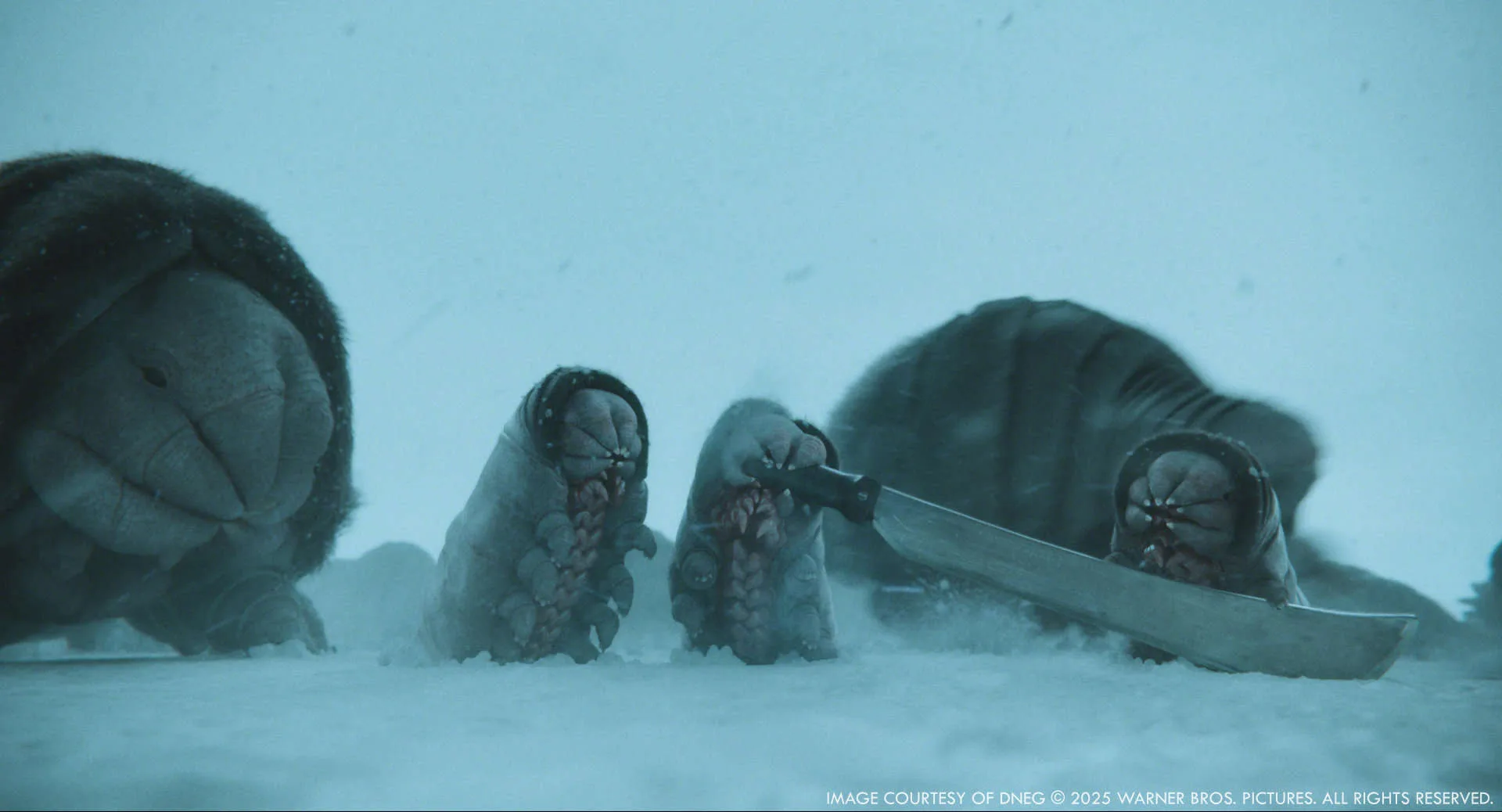
How did you find the right balance between their organic appearance and their expressiveness to make them both alien and empathetic?
RL: A mixture of the design and acting. The design lent itself to being secretive and nervous, with lots of coverage over the face and lots of mandibles. But, as they acted, we could open up with lots of movement and expressions. Eyes are the window and that worked so well here. Their eyes are round and cute, which helps with empathy, but when their faces open we see that the eyes are jangling on stalks! So it was a really lovely marriage between cute and terrifying. Also developing the type of creature they were was very important as we could then utilise all the limbs and parts of their body and face to help get that character across. There were a lot of parts there to act with!
Were there any particular inspirations for their behavior and gestures to reinforce their emotional depth and believability?
RL: As well as having the beautiful concept art, Director Bong was able to guide us on the acting, tone and feeling that he wanted to achieve. He wanted the audience to be revolted by the Creepers but then in the end love them.
The ‘Junior Creepers’ were like teenage boys, mischievous but still best friends with each other. We did a test shot with one of our Animators, Karrina Hooper. She found a great clip of bear cubs playing and nipping at each other. We made up some dialogue for the clip and added the test audio from Bong, and it worked really well. We tried to isolate the motion in the mandiles to certain tones of the audio, and isolate some of the audio to mean certain phrases and emotions.
The contrast for Mama was actually the best, she had a mystery about her but you could play with it a bit. Mama is like a wise old lady. She has the slow plodding and aged wisdom of an old elephant, but the dialogue and the look in her eyes shows a sharpness that hasn’t dulled.
The ululation parts were based on audio and ideas of classic ‘terror’ but that in hindsight feel more like a fun Halloween. It was meant to scare but, as we find out, wasn’t totally the truth. That really was a great concept for the Creepers as a whole – Mama, the juniors, and the babies are all terrifying to look at but are friendly and playful under it all. And much wiser than their human counterparts.
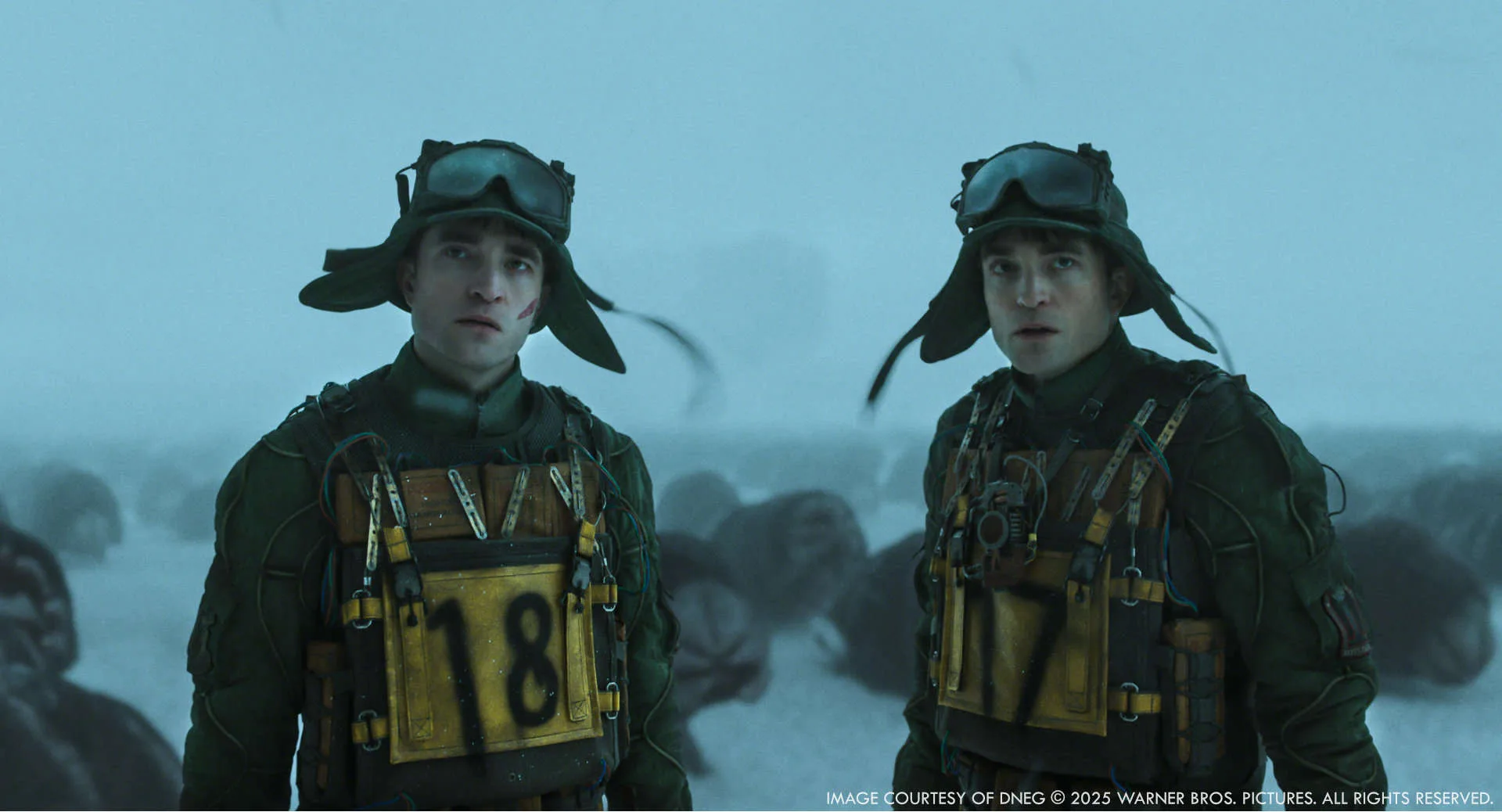
Scenes featuring large groups of Creepers must have been challenging in terms of animation and crowd management. What was your technical approach to making these sequences both fluid and natural?
CM: It was a huge consideration, right from the beginning. At the time, DNEG’s crowd tools were largely geared toward human or bipedal characters, not twelve-legged creatures like the Creepers. Johnny James Gunaraj led the charge as our Crowd Supervisor.
One of the first things we tackled was ensuring proper foot contact. We developed tools to make sure that all twelve of the Creepers’ feet would always stay grounded on whatever surface they were walking on – whether that was flat terrain or the curved surface of Mama Creeper’s back. We could direct them along paths or define general flow directions, depending on the shot.
That said, very little of the animation was genuinely procedural. The crowd animation was largely built from hundreds of loopable cycles. We created a library of different gaits – walks, trots, runs, gallops – and within each of those we included variations like jostles, jumps, bumps, and head shakes to keep things feeling organic. And that was just for the junior Creepers. Within those crowds, we also had baby Creepers, which required their own distinct animation cycles.
We’d review crowd passes visually, looking for any elements that stood out as obvious duplicates. If something felt repetitive, we could easily swap out a crowd agent for a different animation cycle or texture variant. In some cases, we’d promote a crowd agent to a hero animation rig, and the animation team would step in to provide a bespoke performance for that individual creature.
We actually made sure to include some hero character animation in nearly every crowd shot – it’s what gives each moment that sense of uniqueness and authenticity.
Looking back, I do think it would’ve been great to develop some more procedural animation tools but, all things considered, I’m really happy with the final result.
RL: When I saw the boards with Chris, I was definitely eyes wide open and a lot of “how are we going to do this?!”.
My intention was to make it feel like a hand-keyed crowd. I wanted it to feel alive, have lots of moments and not feel procedural. Chris and Dan were both super supportive of this idea, and it wouldn’t have worked without them being onboard. So we went about creating 100s of animation clips and performances – walks, gallops, trots, super runs and rolls. But also jostles, jumps, horse kicks, cries, screams, etc. We had a fantastic team of animators globally and the team in India, supervised by Ibrahim Basha, were tremendous.
We also made allowances to always add hero animation to these shots on top, so we could add extra flavour around the areas that were center of attention. It worked really well with the ‘Shell Game’ crowd piles especially, as we could fill in and add little moments here and there to help enhance areas that weren’t working as well. We did this process to the very end. I could have happily hand-keyed every Creeper in the crowds!
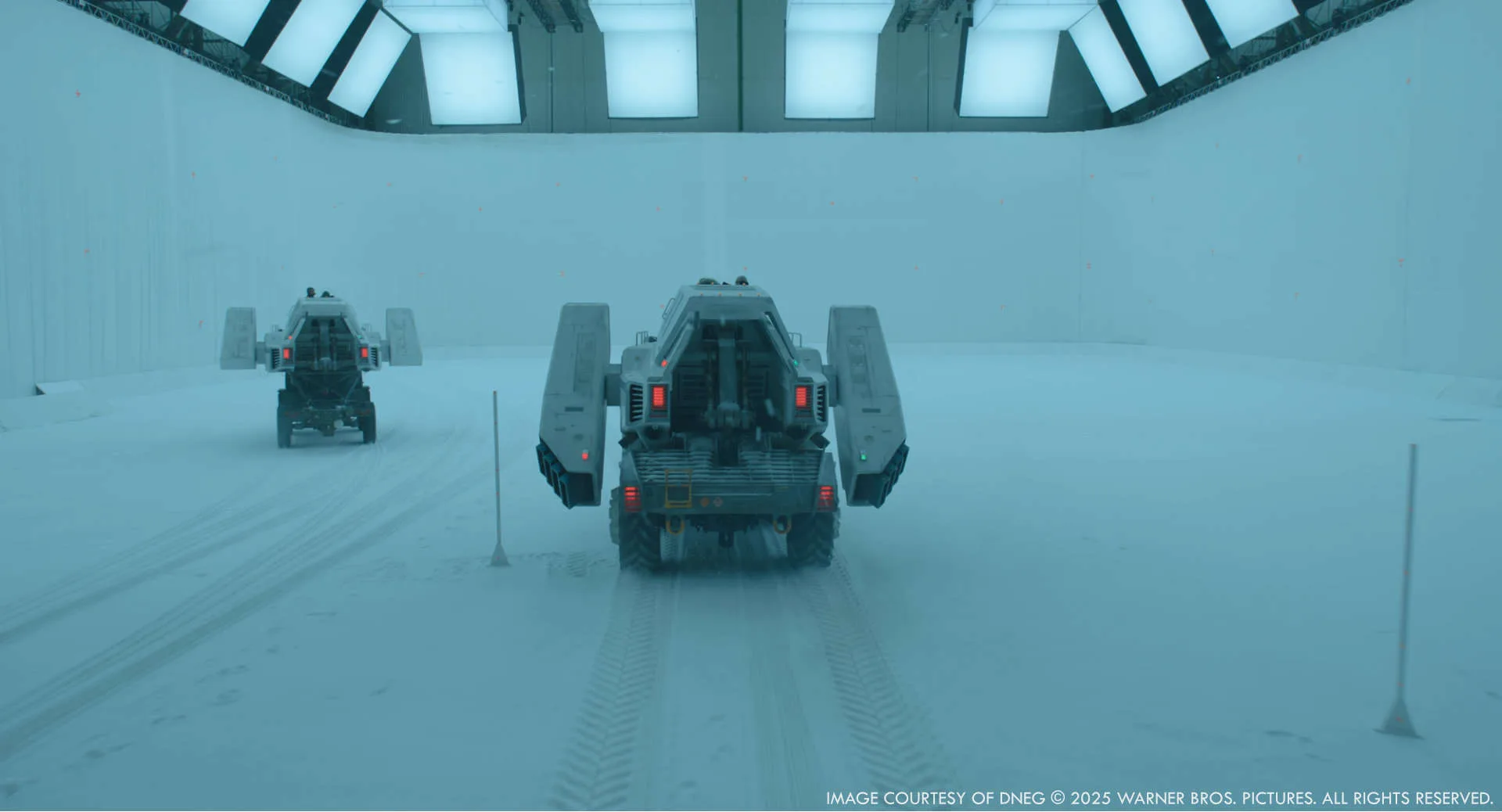
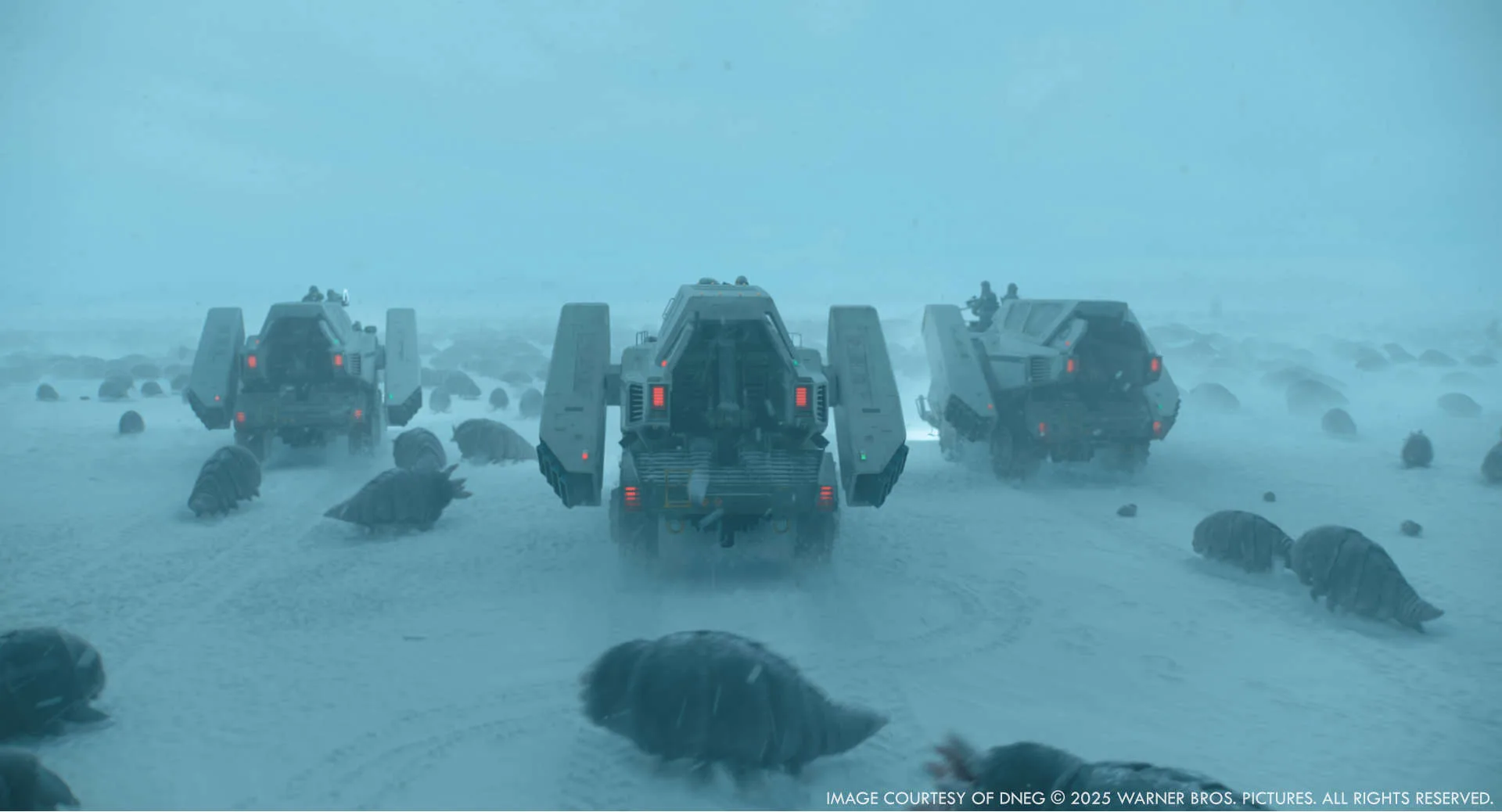
Niflheim is an extreme environment with intense weather conditions. How did you design and integrate effects like snow, storms, and icy surfaces into the different scenes?
CM: In some ways, the environment was deceptively simple – essentially a vast, white ice field. The director has described it as “a blank canvas”, which he then filled with the characters and Creepers.
The icefield itself was based on a real-world location, Langjökull in Iceland. Our Environment Supervisor, Romain Simmonet, built the ground plane using DEM data from the region. While it was generally flat, the terrain had enough natural undulations, small cliffs, and crevices to add realism and subtle variety to the surface.
The majority of our shots were layered with blizzard elements, which were absolutely essential to the look and mood of the sequences. The snow and storm effects added depth, atmosphere and, in certain scenes, a strong sense of chaos. We could dial the storm intensity up or down depending on the emotional tone. For example, it’s raging at full force during the third act climax, then gradually settles as the ‘Shell Game’ reaches its conclusion.
We relied on a number of layered blizzard elements in almost every shot:
- Falling snow: Particle-based snow, which had to fill every inch of visible screen space.
- Interactive falling snow: Light flakes that would settle in the fur or hair of our hero Creepers – a very subtle detail, but incredibly effective.
- Ground snow: The snow and ice surface itself, which had to support footprints, tire tracks, and any other interaction.
- Interactive ground snow: Kickup particles that were triggered by movement – whether from Creepers running or vehicles driving – to add energy and realism.
- Snow mist: Fine atmospheric passes that added depth and helped unify all the elements in comp.
All of these were simulated, and many were animation dependent. Our FX Supervisor, Marco van der Merwe, did a great job ensuring that the workflow was automated. In some cases, we were able to turn around updated snow simulations within hours of animation approval just by running a command line script.
There were also a few standout hero moments where we needed close-up CG snow. On set, they’d used Epsom salts for the ground surface. From a distance it worked really well – it even left footprints and tyre tracks – but in close-ups it didn’t behave like real snow. One particular shot, a close-up of Mickey’s foot stepping into the snow, had to be replaced almost entirely with CG. I don’t think you’d ever suspect it wasn’t real, as it’s not the sort of shot you’d assume would need VFX help, but it’s really very convincing.
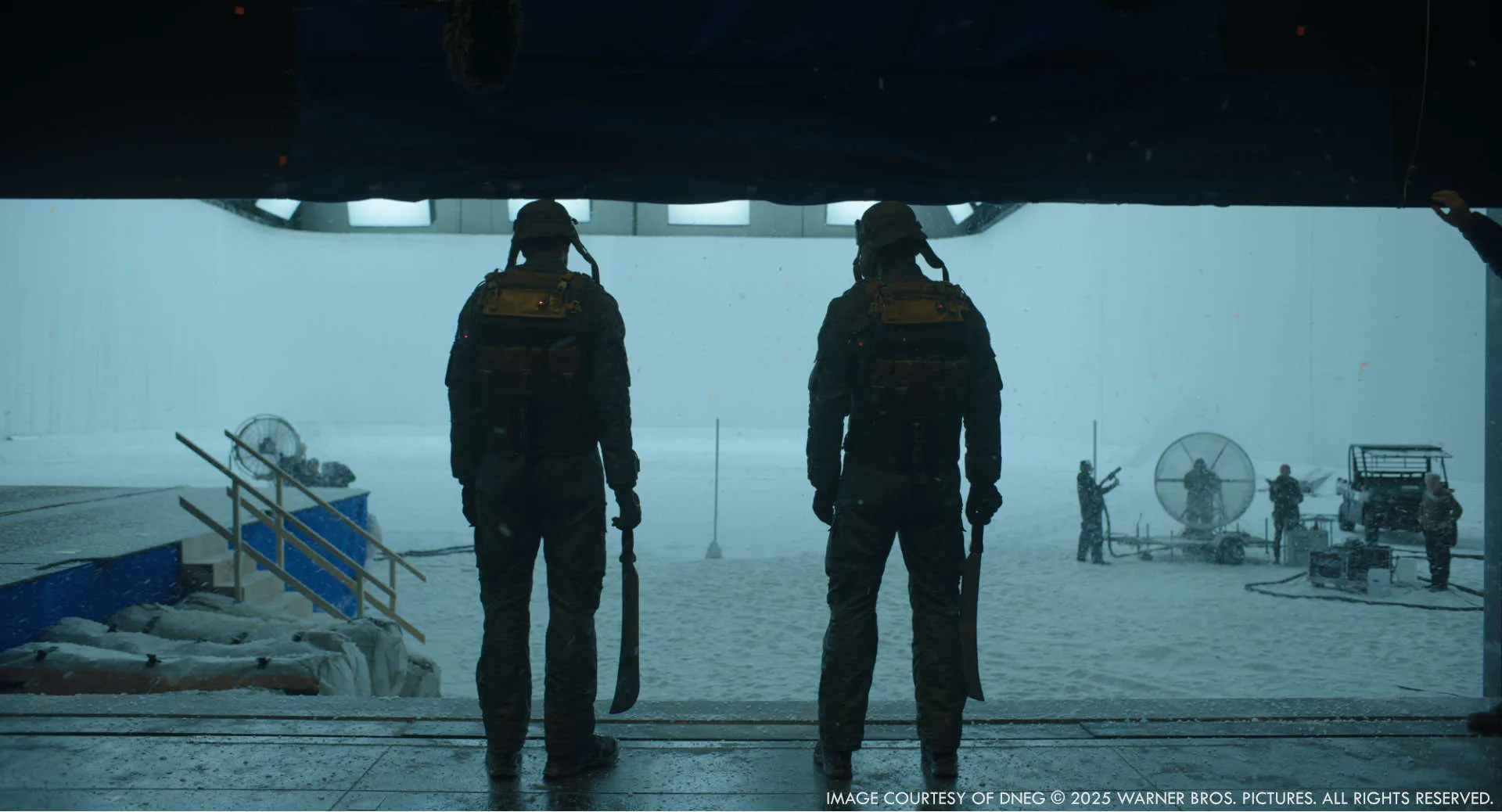
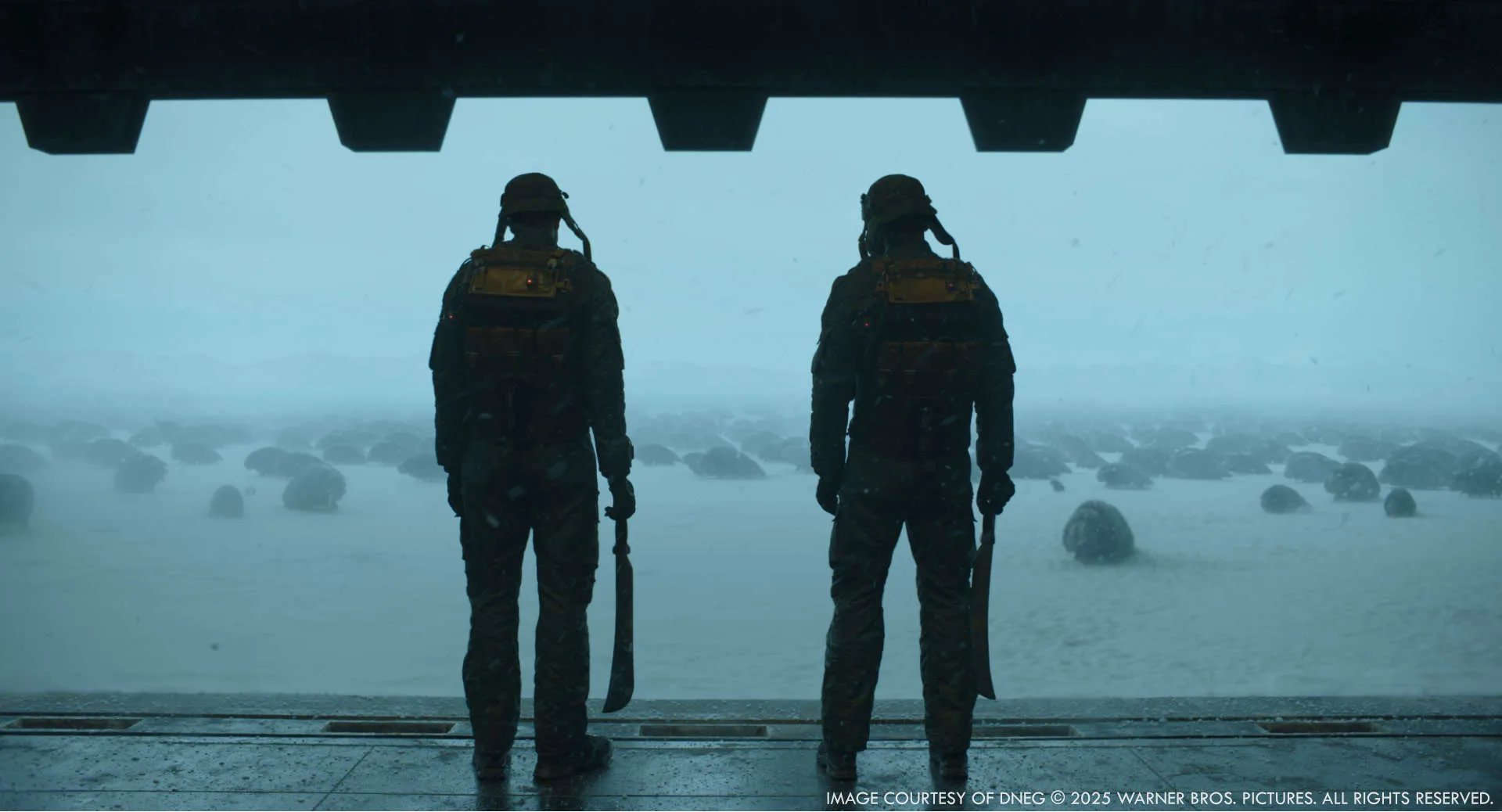
Lighting and atmosphere play a crucial role in shaping this world. What artistic and technical choices were made to give Niflheim a unique and immersive visual identity?
CM: The lighting approach for Niflheim began right on set. A massive snowfield set was built at Cardington Studios, surrounded by huge white walls and topped with a grid of large soft boxes. This setup created a broad, diffuse white light – perfectly mimicking the flat, overcast illumination you’d expect in a blizzard. It gave us a solid foundation for visual continuity and made it much easier to integrate the actors and practical elements into the digital storm environments we’d be building later.
All of the previously mentioned FX elements – falling snow, mist, kickups, etc. – were passed to our lighting department led by Lighting Supervisor, Casey Gorton, and Lighting Lead, Inki Jo. They faced a massive creative and technical challenge: balancing atmosphere and visibility (or lack of visibility) to preserve the mood while ensuring everything felt grounded and realistic on screen.
Technically, it was also an enormous challenge. The amount of elements in each shot was intense – snow, fog and mist, in environments that extended all the way to the horizon. Memory usage and disk management became major considerations, especially since everything was rendered and composited in deep. Optimisation was critical, and CG Supervisor, Ryan Mintenko, made sure the pipeline was efficient and scalable, so those challenges never became an issue as far as I could see… although I’m sure behind the scenes it was extremely challenging.
The final blizzard look took time to really dial in, and that’s where compositing made a huge impact. Compositing Supervisors Kunal Chindarkar, Sharon David, and Felix Lafontaine did incredible work pulling all those layers together — creating an atmosphere that felt oppressive, cinematic and immersive, without ever losing sight of the action or emotion within each shot.
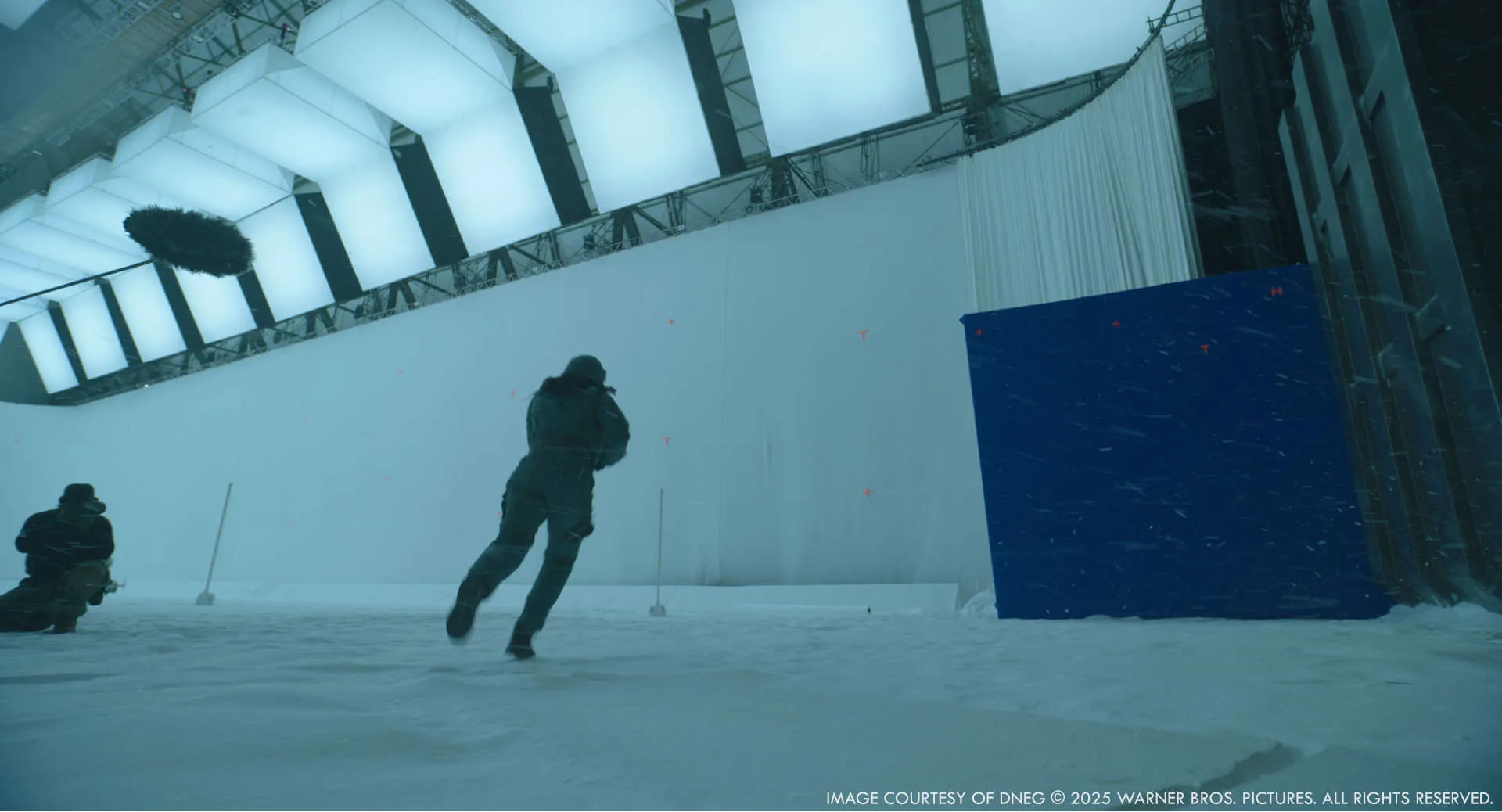
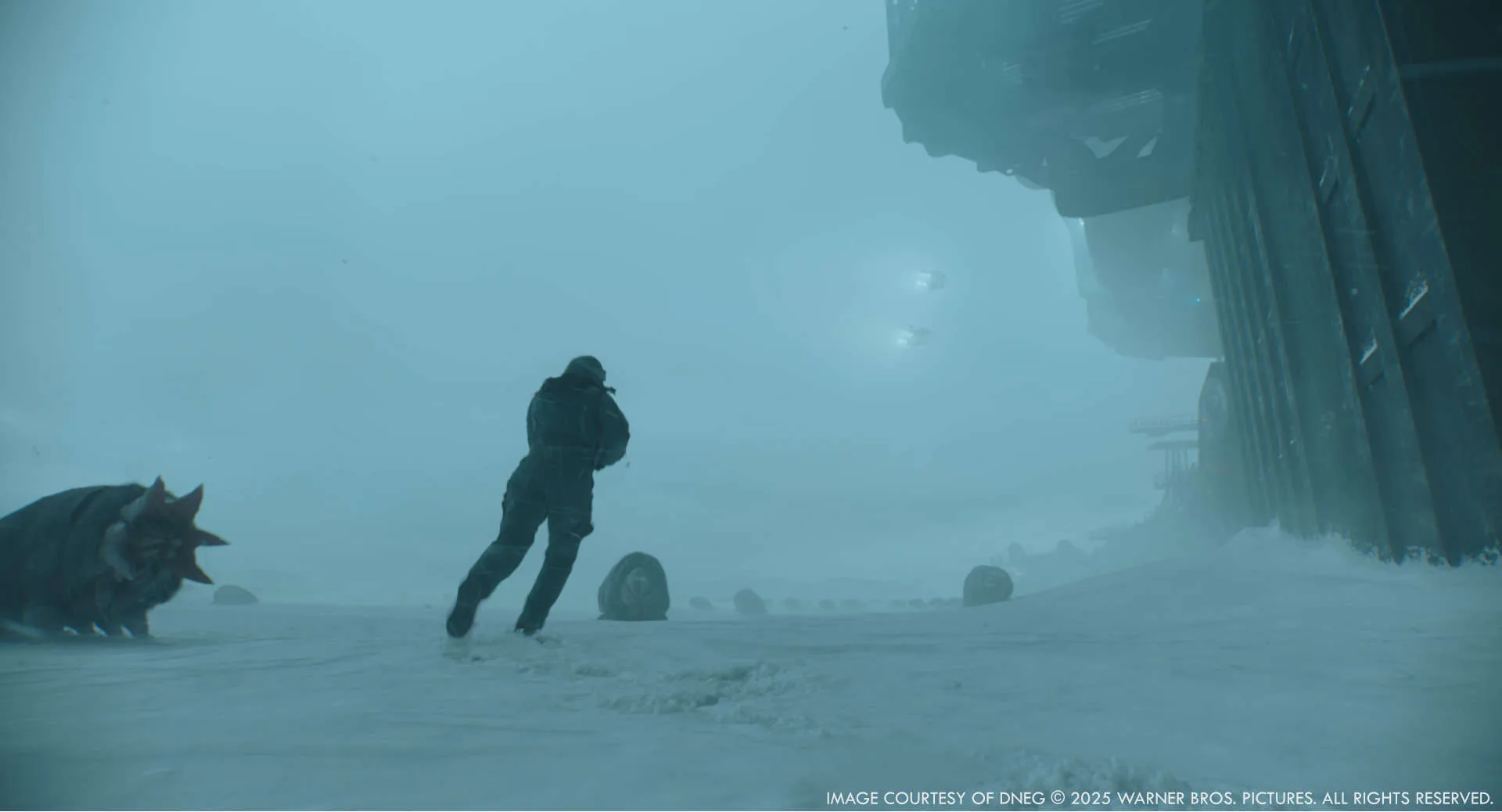
Were there any memorable moments or scenes from the film that you found particularly rewarding or challenging to work on from a visual effects standpoint?
CM: The ‘Shell Game’ sequence definitely stands out – both creatively and technically, it was one of the most challenging parts of the show. The concept behind the sequence was that the Creepers would form massive, writhing piles to protect and conceal Mama. They’d then form additional decoy piles so her true location couldn’t be identified – much like the gambling game it was named after.
What made it especially challenging was that these piles hadn’t really been fully designed before we came onboard. The previs team had indicated that there would be large, hemispherical mounds of animated creatures, but the visual design and technical approach was our biggest challenge on the show.
We pulled inspiration from various real-world phenomena – things like ant and insect behaviour, ‘reindeer cyclones’, and ‘rat kings’ – to help guide the look and behavior. We experimented with different motion strategies, including opposing waves of creepers, but eventually landed on a spiraling motion that tied into the larger visual motif of the creatures forming spiral patterns around the spaceship.
Creature TD, Denis Sviloguzov, and FX Artist, Aleksandr Starkov, were instrumental in helping us develop and execute the final look of the piles. Their contributions were key to making those shots work.
The ‘Shell Game’ ended up being some of the most complex and rewarding work we did on the film and seeing it all come together on the big screen for the first time was really rewarding.
RL: Apart from the amazing crowd work, from a pure performance point of view, it was the Mama acting journey that we went on. One shot of Mama – where she has 15-20 Creepers attached to her, sliding on and shaking off – was all hand-keyed and turned out incredibly well. She also had a great quality to her around the face and the eyes. We worked a lot on softening her performance and the work that the whole team did on rendering, and the look and quality of the eyes themselves, was outstanding. Working on this particular creature also meant a close relationship with our studio partners at Framestore. We created a great professional bond with the animation team there, led by Max Solomon, and really saw eye to eye on what we could do with Mama. It all came together so well, I wish we could have had more shots of Mama in conversation.
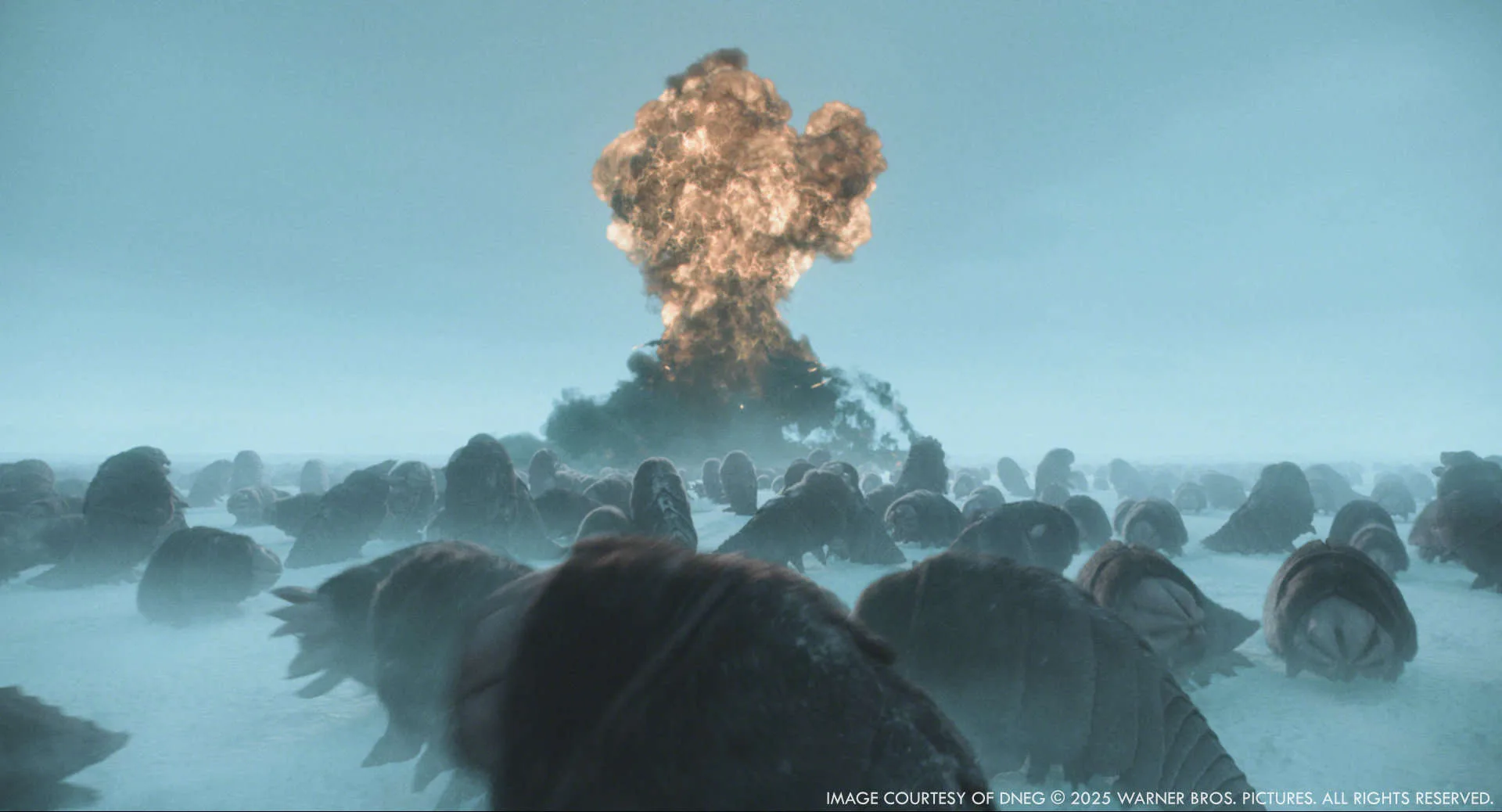
Looking back on the project, what aspects of the visual effects are you most proud of?
CM: I think I’m most proud of the work we did on the Creepers – not just how they look, but what we were able to bring to life in terms of character. They’re beautifully integrated into the photography and feel like a natural part of this world, which is especially rewarding on an original film like this. It was a massive team effort across departments – everyone brought their A-game to make these creatures what they are. There was a real sense of creativity and collaboration, which I think you can feel in the final product.
RL: Probably getting to realise a character from scratch with Director Bong, and the crowd work for the ‘Shell Game’. As mentioned, when I saw the boards with Chris, I really didn’t know how we could pull it off without 200 animators and 10 years! Getting to work with a Director like this, on an alien show like this, and with the creative talent that we did feels like an opportunity that doesn’t come around a lot, and I am very grateful for it. It did feel, with the greatest respect to Director Bong, like the closest thing we could get to animating a VFX version of a Studio Ghibli movie! We had this incredible auteur Director’s vision of an alien creature, with an amazing moral message, and it’s amazing to see that it worked so well.
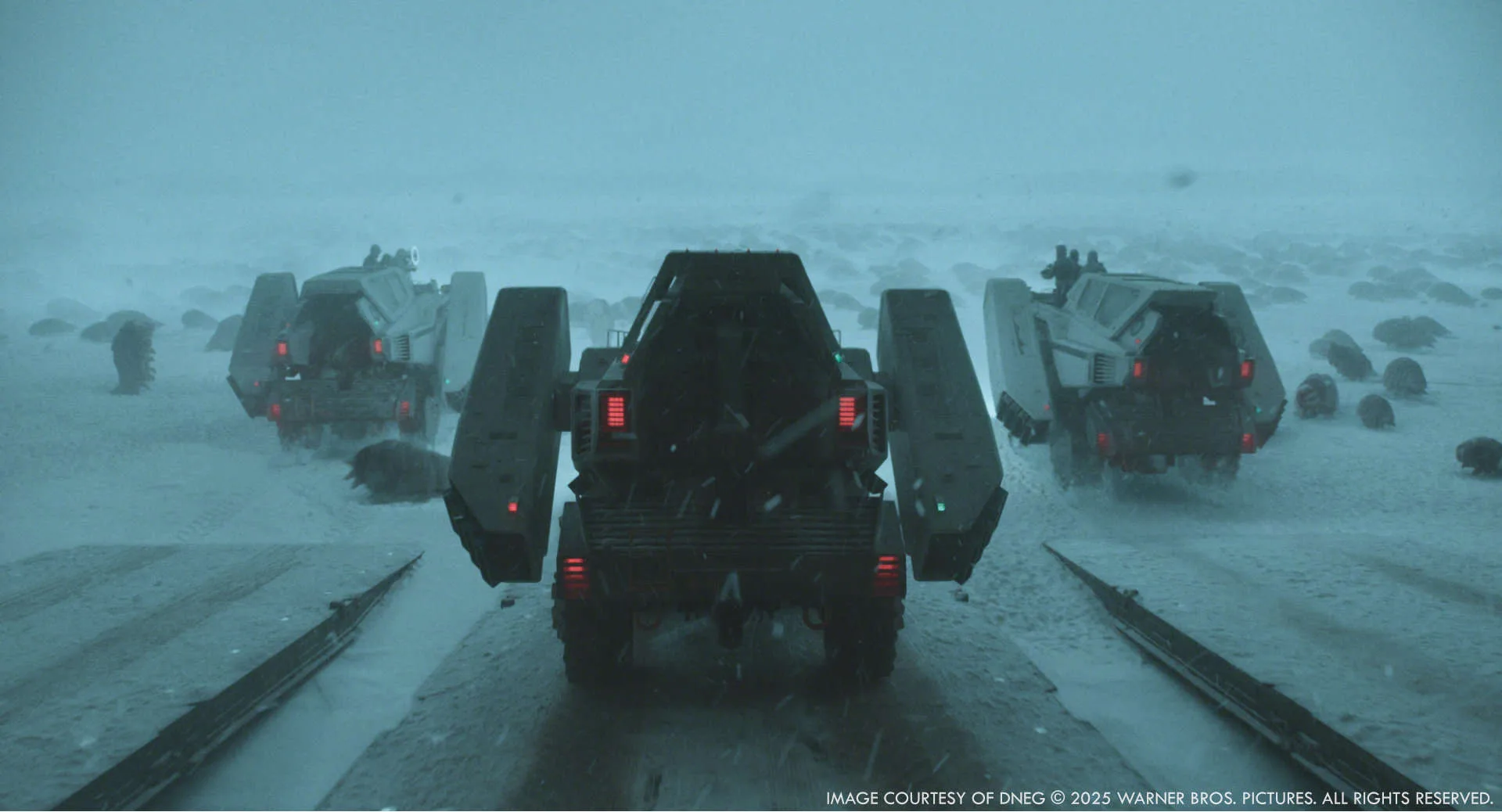
How long have you worked on this show?
RL: From May 2022 to November 2023.
What’s the VFX shots count?
CM: DNEG contributed around 300 shots across 14 sequences
What is your next project?
CM: I’m afraid I can’t say just yet!
RL: I’m deep in pitch and prep work for something big and exciting for 2026!
A big thanks for your time.
WANT TO KNOW MORE?
DNEG: Dedicated page about Mickey 17 on DNEG website.
© Vincent Frei – The Art of VFX – 2025




